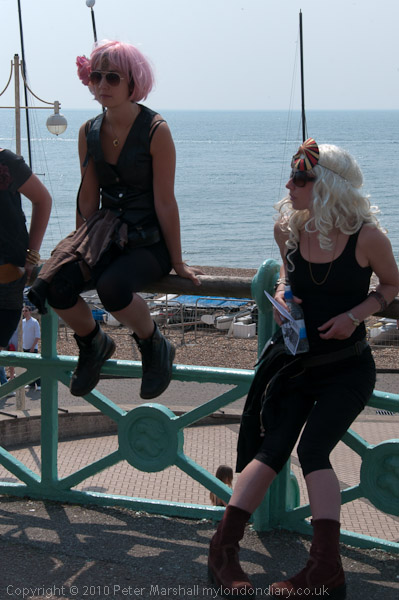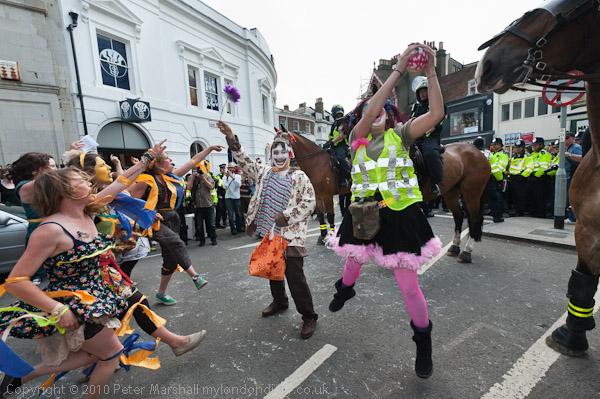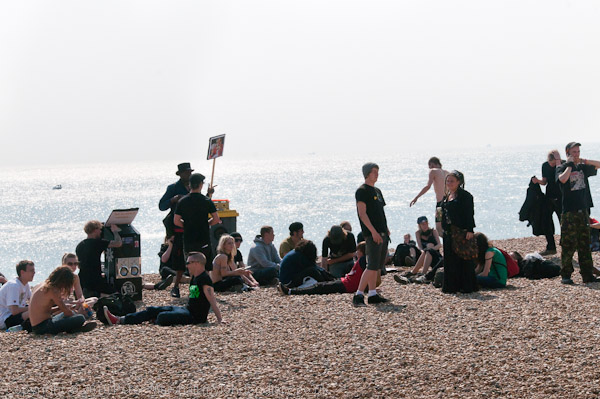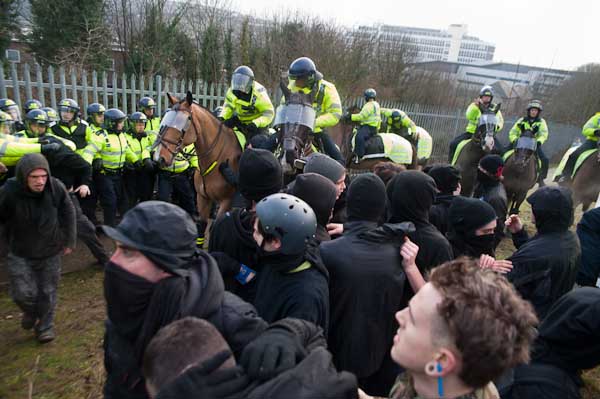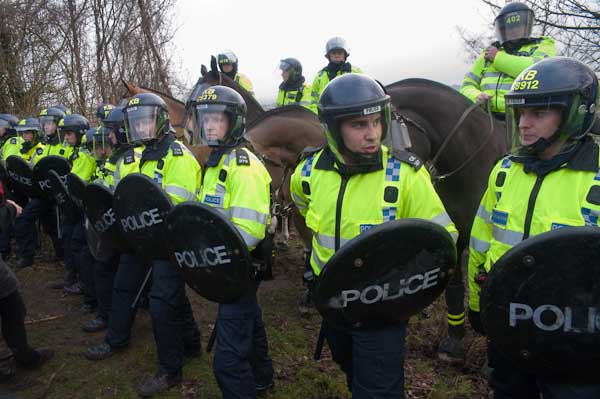Trade Justice At Brighton: Twenty years ago on Sunday 26th September 2004 I spent the day in Brighton, not with my bucket and spade on the beach but with my Nikon D100 camera, and both a wide-angle and telephoto zoom lenses.

I was there with around 6000 other people at an event organised by the Trade Justice Movement going to lobby at the Labour Party conference – who at that time were in government with Tony Blair as prime minister.

According to its web site, “The Trade Justice Movement is a UK coalition of nearly sixty civil society organisations, with millions of individual members, calling for trade rules that work for people and planet.“

They want not free trade but fair trade “with the rules weighted to ensure sustainable outcomes for ordinary people and the environment. We believe that everyone has the right to feed their families, make a decent living and protect their environment. But the rich and powerful are pursuing trade policies that put profits before the needs of people and planet.”

And of course the rich and powerful are still in charge, still driving headlong towards global catastrophe while concentrating on amassing global power and vast fortunes, amounts far beyond what anyone can actually spend or benefit from. Certainly the world does not need – and cannot afford – billionaires.

We need a fairer system to share the world’s resources, and fair trade has a large part to play in this. Back in 2004 the Trade Justice Movement tried to get our government to change its policies but with little effect – and it is still trying to do so.
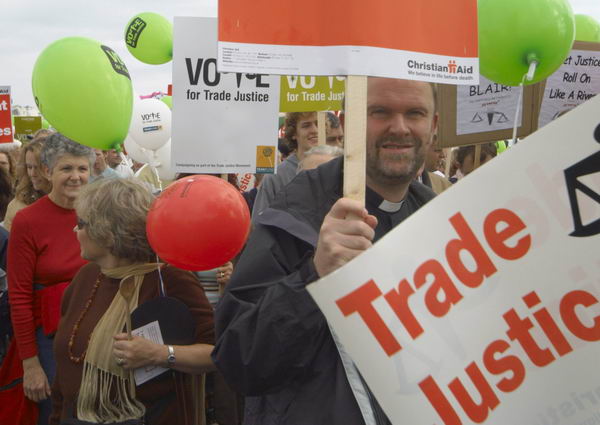
On the web site they list that they are calling on the UK government to:
- Ensure that trade rules allow governments, particularly in poor countries, can choose the best solutions to end poverty and protect the environment;
- Ensure that trade rules do not allow big business to profit at the expense of people and the environment.
- Ensure that decisions about trade rules are made in a way that is fully transparent and democratic.

My description of the day in Brighton in 2004 was that it began with a rally on the promenade and “continued with a march along the seafront to the centre where the Labour party annual conference was in session. With around 6000 on the march, it straddled about a quarter-mile of seafront. “

“Outside the conference centre there was a two-minute silence before a further several minutes of deafening cacophony from whistles, banging on drums and saucepans and anything else that could make a noise.”

“Then ballot papers calling for trade justice were collected in and put into large ballot boxes along the seafront. Many people had brought cards completed by friends and a good start was made towards collecting the million signatures aimed at.“

On My London Diary I divided the pictures into four groups, General, Speakers, Performers and pictures from the March. This now seems rather confusing, but this was a time when few of those accessing the site were then on broadband. So there were pages of large postage-stamp sized thumbnails which would load reasonably rapidly, with the instruction “Click on any image to load these; they will be slow to download unless you are on broadband.“

The links on the September My London Diary page still go to the pages of thumbnails, but you can go directly to the larger images now on the links below.
General
Speakers
Performers
March & Ballot
Flickr – Facebook – My London Diary – Hull Photos – Lea Valley – Paris
London’s Industrial Heritage – London Photos
All photographs on this page are copyright © Peter Marshall.
Contact me to buy prints or licence to reproduce.

